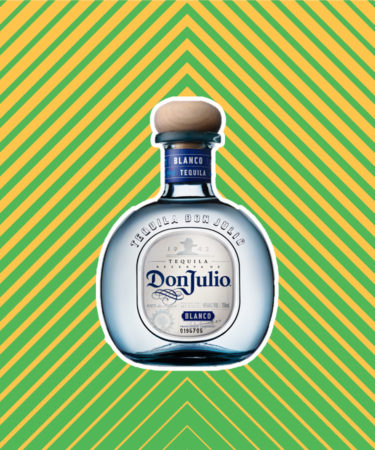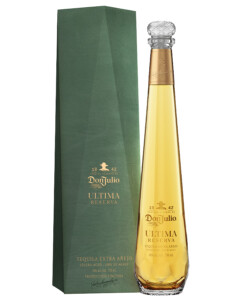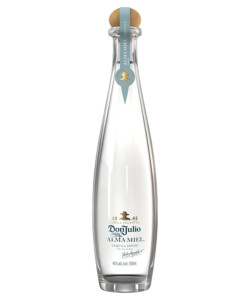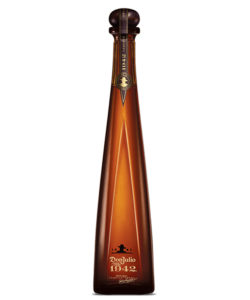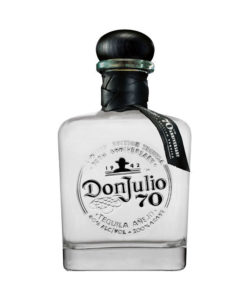Everybody loves a good game changer — think Lady Gaga, doughnut hamburger buns, or raccoons as pets.
But every time you scan a back bar for your favorite bottle, or take your time savoring a great Margarita, you could be overlooking one of the major game changers in tequila: Don Julio.
At a time when tequila production meant quantity over quality, Don Julio dared to challenge the status quo: The company coddled its agave, bottled short when everyone else went tall, and even stripped its aged tequila down to crystal-clear agave bones.
Here are nine things you need to know about super premium tequila O.G., Don Julio.
It was founded by a teenager.
Most of us at 17 are just beginning to dabble in angry poetry. But in 1942 in Jalisco, Mexico, one 17-year-old was not only supporting his entire family financially, he was laying the foundation for what would become the world’s first luxury tequila brand. And yes, that makes getting published in your high school lit mag a little less epic an achievement.
That teenager was Don Julio.
Just like there was a real Richard Hennessy, there was indeed a Don Julio (no word yet whether Ziggy “I Dare You to Drink This” Popov is a real person). When Don Julio González began distilling tequila as a teenager, he didn’t have big business plans. He was simply trying to supplement a weekly income of 9 pesos for his family. He also just so happened to care about tequila. So at a time when it was just a workhorse drink — fiery, raw, and rough around the edges with more than enough kick to knock you head-first into sweet oblivion — Don Julio staked his future on the idea that tequila might someday be savored, sipped, and described in as much loving detail as fine whiskey. (He was right.)
The distillery was built on borrowed money.
Most worthwhile ventures — higher education being the one soul-crushing exception — start with a loan. When the just-barely-post-adolescent Don Julio decided he was going to introduce his exacting, persnickety standards to tequila production, his first stop was at the doorstep of a local businessman, asking for a sizable loan to start his distillery. The businessman agreed, agave hearts found their way to ovens, and Don Julio’s first tequilas were bottled. (Though apparently only friends and family got to drink the earliest stuff, and we hate them for it.)
Don Julio was the granddaddy of “Super Premium.”
Beyond the standards Don Julio introduced to the industry, which emphasized health and character of the Blue Weber agave itself, the brand fundamentally changed the way consumers regarded tequila, laying the foundation for what we now call “super premium” (where bottles sell for $26.67 or more). Between 2012 and now, more than seven decades after Don Julio began distilling, sales in the super premium tequila category have gone up 706 percent.
The bottle design was intentionally off-trend.
In Don Julio’s time, tequila bottles were purely utilitarian, long, lean, and generally tucked under the table until someone’s drink needed topping off. They certainly weren’t a point of visual interest (not like some of the stranger specimens out there today). Don Julio dared to go off trend, designing tequila bottles that weren’t just short but almost awkwardly squat. The goal was to create not just a visually distinctive bottle, but one you could keep on the table without blocking anyone’s view of your beautiful, drunken face.
The Master Distiller knows his way around a chemistry set.
Don Julio master distiller Enrique de Colsa was formerly an industrial engineer, working in what he describes as “liquid handling,” a field we have to assume involves lots of chemical equations and the vigilant use of rubber gloves. As a result, de Colsa handled things like filters, compressors, and even bombs. De Colsa eventually moved toward perfumes and, eventually, spirits. When he met Don Julio in 1998 he was actually working for a rival distiller; Don Julio immediately plucked him away and made de Colsa master distiller for the entire brand in 2004.
Its añejo is more tequila and less barrel, and that’s weird (but good).
Most reposado and añejo tequilas do their aging in repurposed barrels, absorbing a bit of added character from the wood. Don Julio follows suit: Its reposado spends eight months in old Kentucky bourbon barrels. But it goes a bit off-trend yet again with its añejo, which ages for 18 months in reposado barrels (basically a doubly used barrel). The result is gentler impact from the wood itself, with more of the agave character left to shine through, making it an anomaly among aged tequilas.
This tequila has something in common with Jack Daniels and Crystal Pepsi.
Consumers tend to think older spirits should be darker in color, so some spirits producers (legally) feed our visual lust with caramel coloring. Don Julio bucks the trend with its “Claro” añejo. The brainchild of master distiller de Colsa, the Claro is aged for the same 18 months as the regular añejo, but the finished tequila is then charcoal-filtered to remove any color. Like Crystal Pepsi, it goes clear in a category where clear is uncool.
Almost 80 years later, the company is still pushing category limits.
Don Julio (the man) set out to reclassify the tequila category, and Don Julio (the brand) hasn’t stopped. Now, in the era of “super premium” tequilas, we’re slowly beginning to enjoy a new whiskey-rivaling category of tequila: extra añejo. To qualify as extra añejo, a tequila has to be aged for a minimum of three years, making it both more expensive and, ideally, more complex. Don Julio’s extra añejo Real tequila is distilled for anywhere from three to five years. If you do find a bottle — which can retail upwards of $350 — no, those aren’t hands, er, cupping anything. They’re agave fronds. Appropriately. Ahem.
